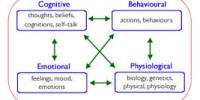Definition of Centralization –
Centralization is a form of organizational structure where the decision making capability rests with the top management. A couple of hand-picked members are entitled to create strategies, determine the goals and objectives based on which an organization will function.
In earlier times, the centralization policy was the most commonly practiced in every organization to retain all the powers in the central location. They have full control over the activities of the middle or low-level management. Apart from that personal leadership and coordination can also be seen as well as work can also be distributed easily among workers.
However, due to the concentration of authority and responsibility, the subordinate employee’s role in the organization is diminished because of all the right vests with the head office. Therefore, the junior staff is only to follow the commands of the top managers and function accordingly; they are not allowed to take an active part in decision-making purposes. Sometimes hotchpotch is created due to excess workload, which results in hasty decisions. Bureaucracy and Red-tapism are also one of the disadvantages of centralization.
Advantages of Centralization:
- The organization can strictly enforce uniformity of procedures and policies.
- It can help in the elimination of overlapping or duplicate activities and save costs.
- The organization has a better chance of utilizing the potential of its outstanding employees.
- It offers better control over the activities of the organization by ensuring consistency in operations and uniformity in decision-making.
The disadvantage of such a structure is that it increases the time taken to arrive at a decision. As decision-making authority lies with selected people from top management, it may result in biased decision making.
Definition of Decentralization –
The assignment of authorities and responsibilities by the top-level management to the middle or low-level management is known as Decentralization. It is the perfect opposite of centralization, in which the decision-making powers are delegated to the departmental, divisional, unit or center level managers, organization-wide. Decentralization can also be said as an addition to the Delegation of authority.
In such an organization, most of the planning, strategy, and decision to implement them are taken by the people in the middle and lower level of management. The advantage of decentralization is that the employees are empowered to make their own decisions that will benefit the organization, which results in a high level of employee satisfaction and boosts the productivity of an organization.
Advantages of Decentralization:
- Faster decision-making and better quality of decisions
- Improves the effectiveness of managers.
- It offers a democratic environment where employees can have a say in their governance.
- Provides good exposure to mid and lower-level managers and creates a pool of promotable manpower with managerial skills.
- Since managers can see the results of their own actions, they are more driven and have improved morales.
Decentralization enables low-level employees to gain leadership skills, which can contribute to the growth of the organization in the long run.
Key Differences Between Centralization and Decentralization –
The points given below are noteworthy, so far as the difference between centralization and decentralization is concerned:
- The unification of powers and authorities, in the hands of high-level management, is known as Centralization. Decentralization means dispersal of powers and authorities by the top level to the functional level management.
- Centralization is the systematic and consistent concentration of authority at central points. Unlike, decentralization is the systematic delegation of authority in an organization.
- Centralization is best for a small-sized organization, but the large-sized organization should practice decentralization.
- Formal communication exists in a centralized organization. Conversely, in decentralization, communication stretches in all directions.
- In centralization due to the concentration of powers in the hands of a single person, the decision takes time. On the contrary, decentralization proves better regarding decision making as the decisions are taken much closer to the actions.
- There are full leadership and coordination in Centralization. Decentralization shares the burden of top-level managers.
- When the organization has inadequate control over the management, then centralization is implemented, whereas when the organization has full control over its management, decentralization is implemented.
Both centralization and decentralization have their own advantages and disadvantages. Even if an organization is working in a decentralized manner, some functions are usually centralized. Some people think that centralization is better while others are in favor of decentralization. In ancient times, people used to run their organization in a centralized manner, but now the scenario has been changed completely due to the rise in the competition where quick decision making is required and therefore many organizations opted for decentralization.
At present, most of the organizations are equipped with both the features, as absolute centralization or decentralization is not possible. Complete centralization in an organization not practicable because it represents that each and every single decision of the organization is taken by the top echelon. On the other hand, full-fledge decentralization is an indicator of no control over the activities of subordinates. So, a balance between these two should be maintained.
Information Sources:
















